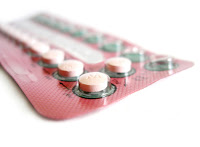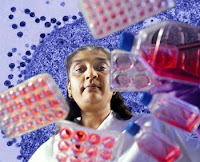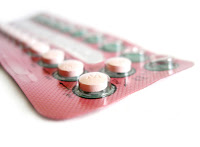Breast cancer is the most frightening disease for women. As a result of breast cancer may lead to amputation of penis, can even cause death to the sufferer. But now researchers have a lot to know how to prevent, or at least reduce the risk of breast cancer. Some attempts to minimize the risk of breast cancer can be done Medically or natural (alternative therapies).
Prevention of natural ways are:
1. Raga playing regularly.
Exercise will lower levels of estrogen produced by the body to reduce the risk of breast cancer.
Regular aerobic exercise may offer some protection against the risk of women developing breast cancer. Research has found that women who performed with passion and often only half the possible non-Gym to get breast cancer, although perhaps other factors that play a role. Exercise also can help women with breast cancer better tolerate the side effects of radiation or chemotherapy and may help promote more rapid recovery after surgery.
2. Never Too Mature Meat Cooking.
Meats cooked / baked produce carcinogenic compounds (amino heterocyclic). The longer cooked, the more these compounds are formed.
Fat in the diet can increase the risk of developing breast cancer and breast cancer, and fruits, vegetables, and grains can help to reduce the risk. It is recommended that 5 servings of fruits and vegetables are eaten every day and that replaced saturated fat with monounsaturated fats, found in olive oil or canola oil. That’s a good idea to make the whole-milk dairy products, meat, and fried foods at high temperatures only occasionally treat than staples. You can turn your menu to sample different kinds of fruits and vegetables fresh and new dishes based on grains and legumes. In this way, you’ll get plenty of fiber, along with vitamins and minerals thought to protect against breast cancer, especially vitamins A, C, D, and E, and calcium, selenium, and iodine.
3. Diet With Fruits and Vegetables.
Foods from plants contain anti-oxidants are high, including vitamins A, C, E and the mineral selenium, which can prevent cell damage that could be causing cancer.
Fat foods can increase the risk of developing breast cancer and breast cancer, and fruits, vegetables, and grains can help to reduce the risk. It is recommended that 5 servings of fruits and vegetables are eaten every day and that replaced saturated fat with monounsaturated fats, found in olive oil or canola oil. That’s a good idea to make the whole-milk dairy products, meat, and fried foods at high temperatures only occasionally treat than staples. You can turn your menu to sample different kinds of fruits and vegetables fresh and new dishes based on grains and legumes. In this way, you’ll get plenty of fiber, along with vitamins and minerals thought to protect against breast cancer, especially vitamins A, C, D, and E, and calcium, selenium, and iodine. Some doctors suggest that breast cancer patients take antioxidant supplements. In addition, alcoholic beverages should be avoided and weight should be avoided.
It is important to note that dietary measures are not sufficient to cope with risk factors for breast cancer other. Women who consume a healthy diet must obey remain to take preventive measures such as having regular mammograms.
4. Consumption of Anti-Oxidant Supplements.
Supplements can not replace fruits and vegetables, but an anti-oxidant formula could be a food additive that can prevent breast cancer.
5. Consumption of nuts.
In addition to soy, Fito-estrogen is also present in other species of nuts.
6. Avoid alcohol.
Many studies have shown that the more alcohol consumed, the risk of breast cancer increased because of alcohol increases estrogen levels in the blood.
7. Bask in the sun.
A little sunlight can help prevent breast cancer, because at the time the sun on the skin, the body make vitamin D. Vitamin D helps absorb calcium breast tissue, thereby reducing the risk of breast cancer.
8. No Smoking.
9. Routine To Breastfeed Your Child.
For reasons still unclear, breastfeeding associated with reduced risk of breast cancer before menopause.
Perform tests on your breast to find early symptoms:
Do your breast exam at least once a month, done after three to five days after your menstrual period ends. Zen a family history of breast cancer.consultation with your doctor about when you should have your first mammogram.
Your use of contraceptives, ask your doctor about the pros and cons pills of birth control.
If you are close to menopause, ask your doctor if you should use hormone replacement therapy to treat menopausal symptoms. Research shows that hormone replacement, especially with combination therapy of estrogen and progestin or estrogen with prolonged use, can increase the risk of breast cancer. You and your doctor can make this decision based on the risk of breast cancer.
Tamoxifen and raloxifene, has been shown to reduce the risk of breast cancer. Risks and benefits of using drugs such as tamoxifen and raloxifene should be discussed with your doctor.






